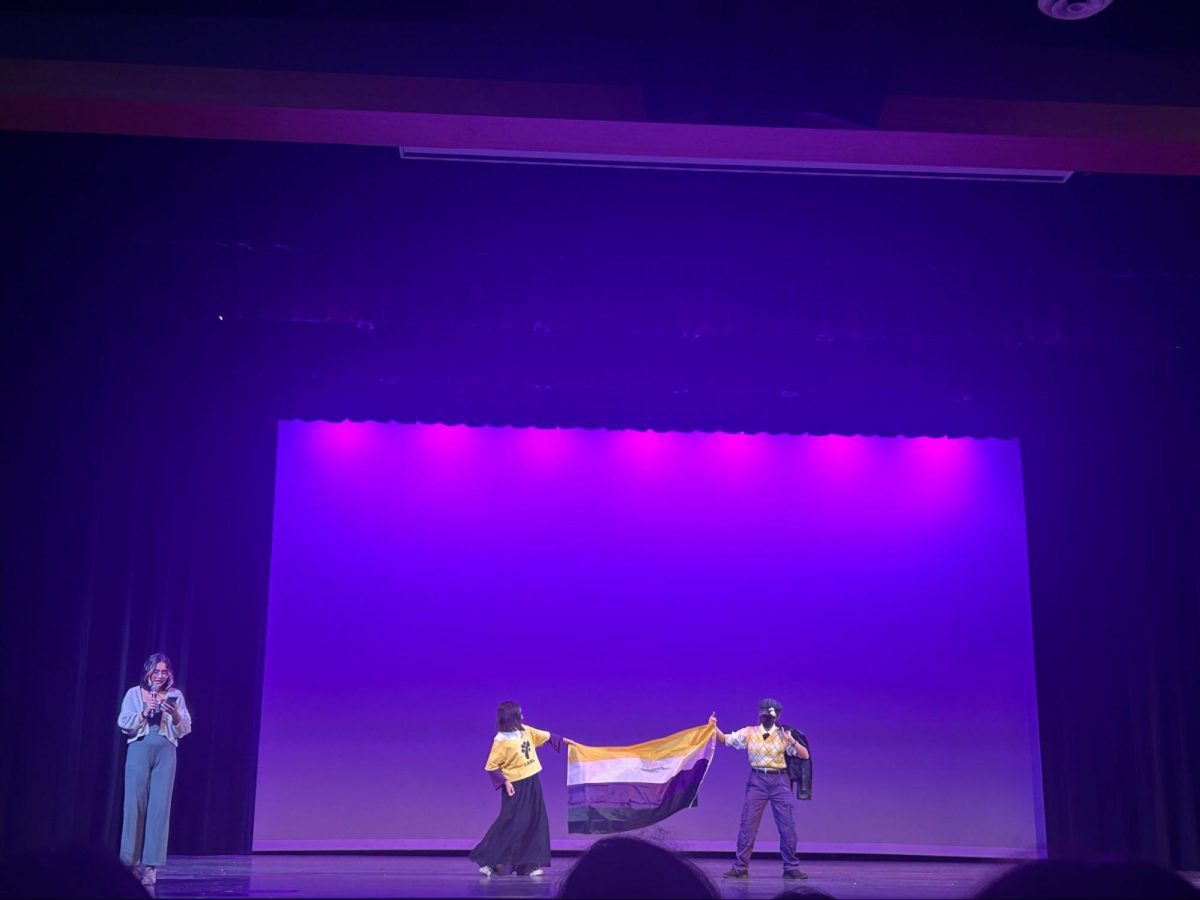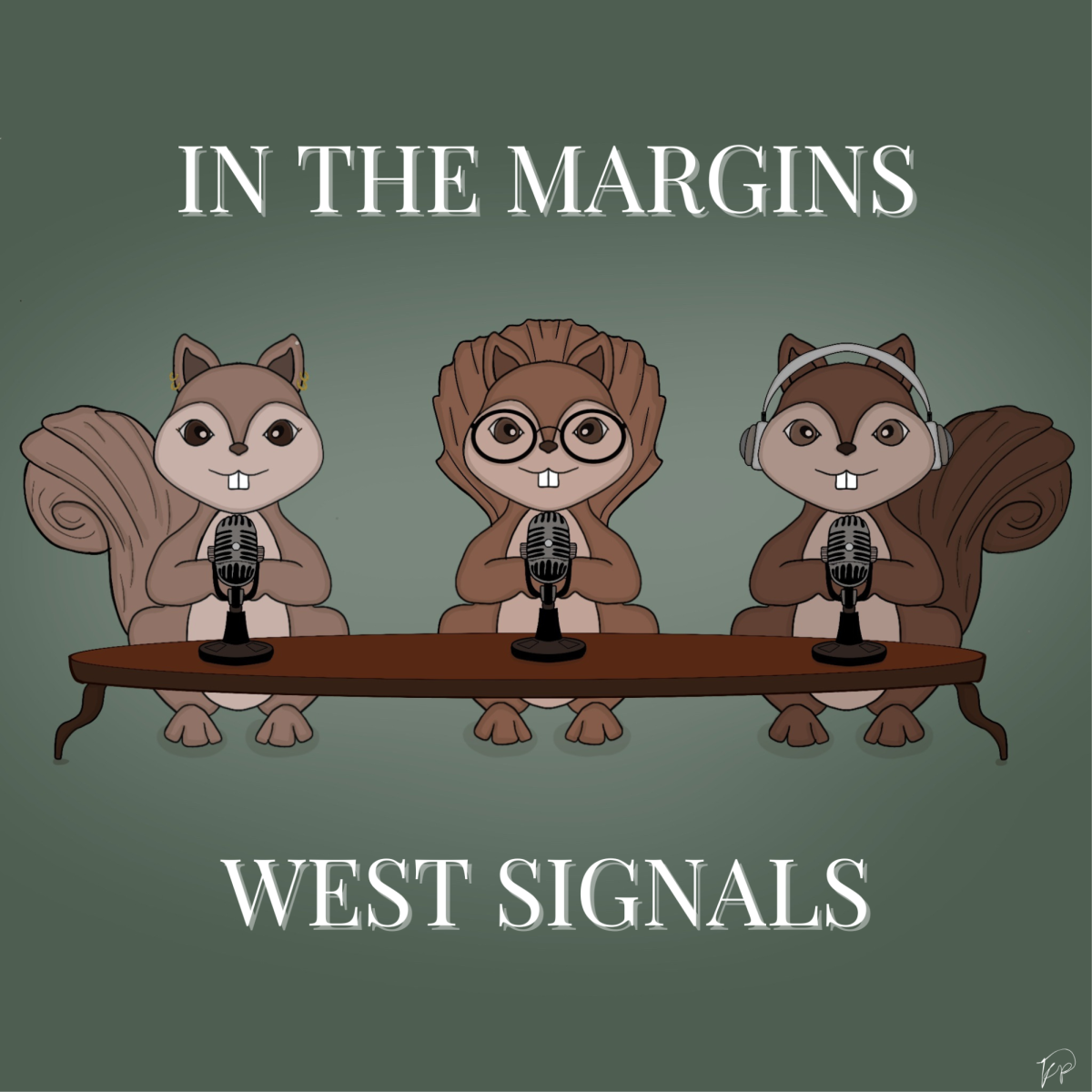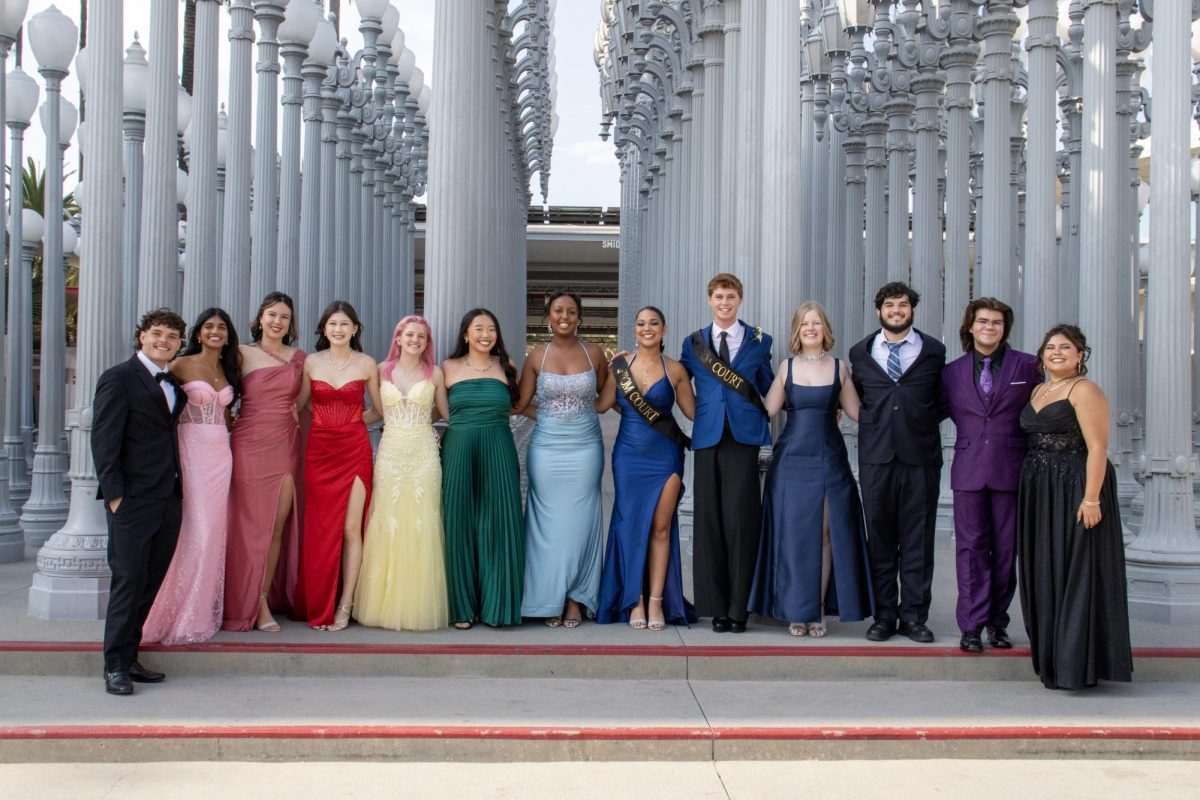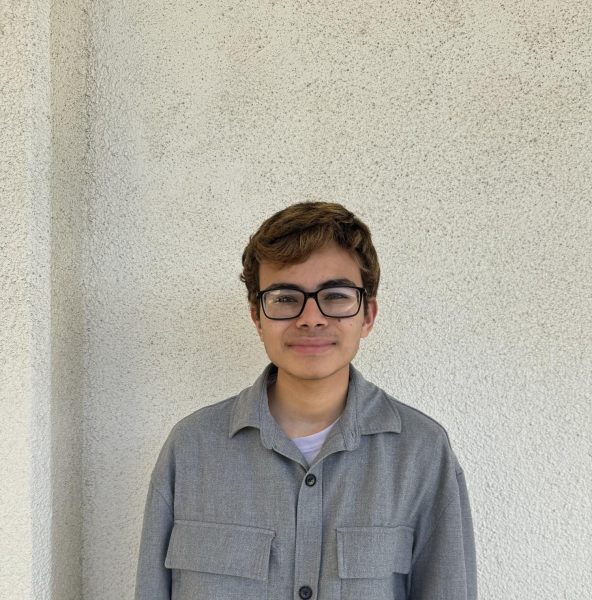The thumping beat of rappers Low G and Tlinh’s “Phóng Zìn Zìn” and the crowd’s hooting cheers filled the Performing Arts Center, spotlighting the Vietnamese Student Alliance (VSA) performers as they smoothly transitioned from waving conical non la hats to rhythmic choreography. Their performance proved to be a memorable feature for West High’s Multicultural Day. The display from the club’s performers — impressive given that some did not have dancing experience — underlined how traditional outfits could effectively complement modern dance.
Another aspect of VSA’s performance was the fact that some of the performers were not of Vietnamese descent. The reason for that was president Conner Nguyen’s (12) desire for more inclusivity in culture clubs. He “wanted a lot more people that weren’t Vietnamese to take part in it, because we thought that an important part about sharing our culture is inviting more people in.” Nguyen ensured that his performers mastered their choreography through extensive rehearsals, praising them for a “pretty good performance that represented our culture really well.” Having a diverse group of dancers paid off, as people who did not have Vietnamese background were still able to learn about the culture and deliver a strong performance.
Like VSA, other clubs who partook in Multicultural Day focused on creating a meaningful cultural display for attendees. Black Culture Club (BCC) president Julia Downing (12) emphasized the grit, determination and struggles of African Americans in a video dedicated to the remembrance of heroes, leaders, and turning points throughout their history. BCC performers then performed a series of dances, applying the aforementioned values central to their identity. She stressed that the club “had to think through things that showcase our culture, because people just like a lot of things that are in Black culture,” which served as an attempt to extend BCC’s reach toward the community.
According to Downing, reflecting on BCC’s past experience with Multicultural Night was essential to ensure positive reception: “Something we did to make sure [our performance] focused on Black culture was having two cultural coordinators, who are responsible for finding the choreographers and planning practices,” she recalled. Her dedication was well-received, as the crowd cheered for the performers who instilled awe in the audience after they displayed the African American values of grit and determination in history.
Another standout performance that evening was that of the Gay-Straight Alliance (GSA), who made their first Multicultural Night debut. GSA performers organized a fashion show with outfits based on pride flags while club co-president Sydney Joseph (12) shared facts about each identity. Joseph expressed how this performance serves as a “reminder that the queer community is still here, despite everything going on with the world, and our community remains strong.” Off the stage, GSA sold bracelets at the Night Market to welcome the LGBTQ+ community and its allies. Joseph underscored how the club’s efforts had an immediate impact on the audience— within hours of GSA’s performance, she had “already seen someone posted on Instagram that our performance meant a lot to them.” Evidently, GSA’s winning debut strengthened the theme of inclusivity at Multicultural Night by improving the representation of people with unique identities. “Showing people who aren’t like some of us that they matter is the most important thing for me,” Joseph stated.
West High’s culture clubs strive to create an impact on people from diverse backgrounds. By partaking in events like Multicultural Night, people from these communities are empowered to share the pride that they hold for their identities. Regardless of one’s affiliation, students should keep in mind that culture clubs always welcome new members— thus, one shouldn’t feel excluded from showing love toward individuals with different identities, or stay hesitant to support others at any cultural event.






